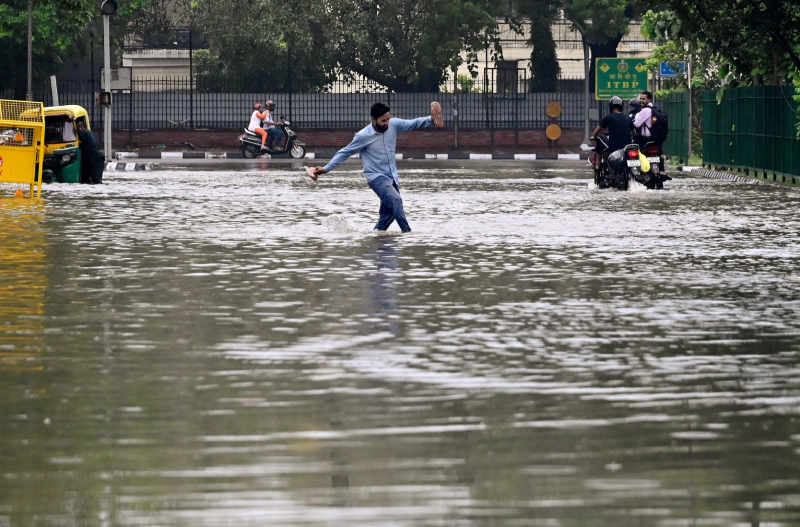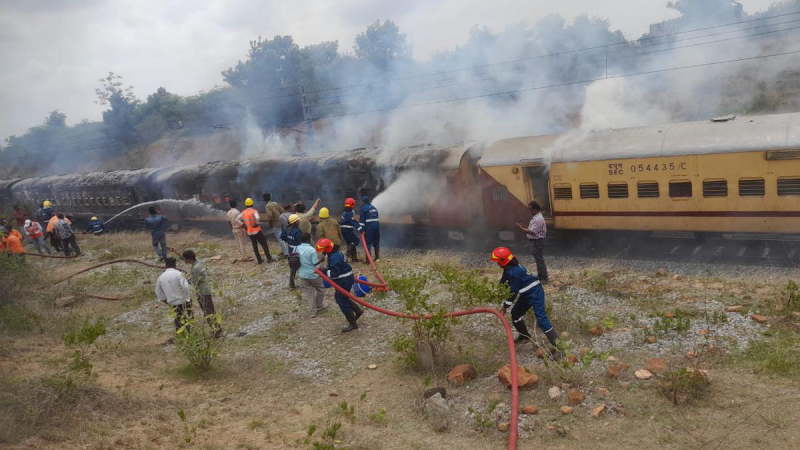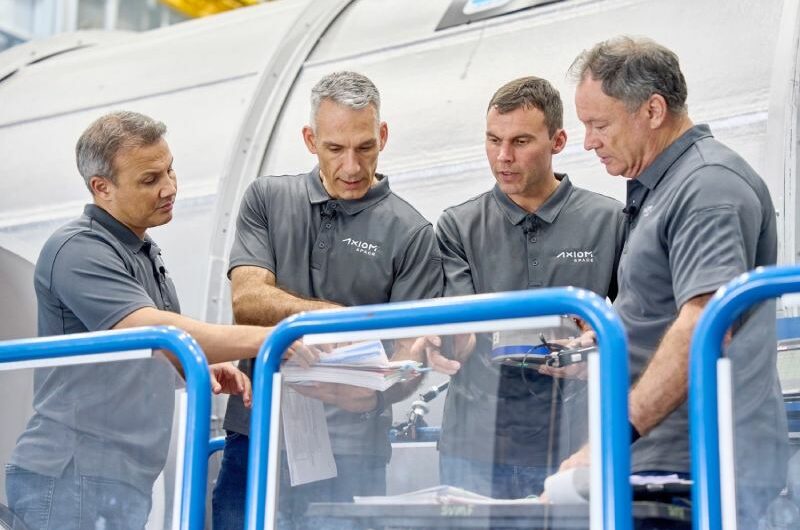As the national capital on Sunday experienced an extraordinary quantity of rainfall, breaking a 41-year record, the luxurious diplomatic enclave of Chanakyapuri, luxurious colonies such Bharti Nagar, and other locations housing VIPs were submerged.
The New Delhi Municipal Council (NDMC) has recommended senior bureaucrats living on the ground floors to leave their current residences and move to safer locations as a precaution due to severe rains and waterlogging in various areas of the national capital. The India Meteorological Department (IMD) reports that Delhi recorded 153 mm of rain in a 24-hour period ending at 8:30 am on Sunday, resulting in the wettest July day since 1982.
In some residential complexes, there were reports of house collapses and waterlogging. In addition to Chanakyapuri, Kaka Nagar, Bharti Nagar, and other well-known roads and colonies under the control of the NDMC, waterlogging problems were also seen in diplomatic enclaves.
Due to the persistent rain, a senior Indian Administrative Service (IAS) officer who lived in the Bharti Nagar neighborhood had to leave her home with her children. Residents on the ground floors have been instructed by the NDMC to locate alternate housing until the water subsides.
“NDMC has encouraged ground-floor residents to relocate to a different location until the water subsides. We have turned off the electricity out of concern for electrocution. I have moved into the first-floor apartment of my first-floor coworker, who lives in a different part of Delhi,” the official, who requested to remain unnamed, added.
In order to reduce the risk of electrocution, the power supply has been switched off in the affected locations.
Another senior official expressed their dissatisfaction, saying that they brought up the issue with the NDMC on Saturday but that the staff had come up with a number of justifications. Water has now entered their residences. The NDMC has responded by deploying equipment to remove the water from the flooded houses.
“I moved to a motel with my wife, children, and other family members until things are back to normal. A machine has been placed in the community by NDMC to flush away water that has entered into the homes as a result of frequent complaints, according to a different official.
Continuous rainfall, which caused main drains to overflow and flood VIP colonies in the capital, was blamed by the NDMC for the deteriorating situation.
Officials from the NDMC are working nonstop to stop future flooding in the area. There have been numerous reports of waterlogging and downed trees, and the appropriate teams are quickly responding to them.
To solve the monsoon issues and avoid waterlogging during heavy rains, the NDMC has set up control centers and placed portable water pumps in strategic places.
In order to stay updated on the situation, Union Home Minister Amit Shah also noted the constant rain in Delhi and met with the Lieutenant Governor. The rain has had a big impact on traffic flow in different regions of the city.
The largest amount of rain for a single day in July since 1982, according to the India Meteorological Department (IMD), rained in Delhi during the course of 24 hours, recorded 153 millimeters.
The Safdarjung neighborhood of New Delhi saw the third-highest 24-hour rainfall for the month of July since 1958 on the 8th and 9th of July, 2023, according to the India Meteorological Department.
The IMD said the data of the five biggest 24-hour rainfall records for the month of July for New Delhi (Safdarjung) between 1958 and 2023, along with a record-breaking 153 mm of rain that was recorded at the city’s meteorological station, Safdarjung, up till 8.30 am. According to IMD, Safdarjung Observatory had recorded 266.2 mm of rain between July 20 and 21, 1958, and 169.9 mm between July 25 and 26, 1982.
Union Home Minister Amit Shah spoke with Delhi Lieutenant Governor Vinai Kumar Saxena on Sunday to get an update on the nonstop rain in the nation’s capital.
As moderate to heavy rain lashed several parts of the national capital and its surrounding areas, Shah spoke to Delhi LG. Following flooding in various areas of the city, the rain reduced traffic flow.
Social media platforms were inundated with images and videos of commuters wading through knee-deep water, asking questions about the effectiveness of the city’s drainage system.
Given the circumstances, Delhi Traffic Police continued to inform residents of Delhi about how traffic was disrupted in some regions of the city via its Twitter account by posting images of the flooded areas.
The Delhi Traffic Police recently issued an alarm through one of these tweets, stating that “Traffic is impacted in the roadway from Kalindi Kunj towards Okhla and vice-versa due to waterlogging and vehicle breakdown at Okhla underpass. These stretches should be avoided, according to commuters.
“Waterlogging under the Railway bridge on Bhairon Marg is affecting traffic on the carriageway from Ring Road towards Mathura Road and vice versa. The Pragati Maidan tunnel is where traffic is being detoured, the Delhi Traffic Police said in another tweet.
Topics #Chanakyapuri #Delhi #Flood #Officials










